Can we talk about how boring B2B content marketing is?
Because it’s really, really boring. And usually pretty bad on top of that.
I get that many industries are highly technical, and are likely only selling to other companies with competent professionals, but you should at least make an effort to help your reader stay awake. When it comes to marketing tactics, this is a good place to start.
It’s almost like these big, multi-billion dollar companies aiming for marketing success decided to personally fund content farms instead of using a small fraction of their budget on honest-to-God engaging content.
Which, by the way, has some pretty awesome results if you do it correctly.
So what exactly are you doing wrong? And what, if anything, can be done to make it right?
That’s what I want to explore with you in this post.
Scale insightful marketing content across the web.
We help you grow through expertise, strategy, and the best content on the web.
Everything Wrong with a Typical B2B Content Strategy
In my digital travels, I’ve found five big, gleaming errors in the typical B2B content marketing strategy that lead visitors away from your site like a donut shop leads to diabetes.
Skim them or read them, but make sure you take them to heart if you’re going to write B2B content.
Error #1: Your Content Is Too Clinical
I get that you’re an expert. You’ve spent the last 20 years becoming an expert, and you deserve to be recognized.
But do you really think that it justifies creating jargon-filled, adjective-laden posts that make you sound like a modern-day wannabe Shakespeare?
Do you have any interest in reading about marketing funnels, distribution channels, or demand generation? Me either. That’s why this post doesn’t try to impress you those fancy terms.
It’s like you’re trying to get to the top of r/iamverysmart on purpose.
Stop it. This is not valuable content. No one wants to read that.
Take this graph for example. It’s entitled “Visitor Engagement Quadrant,” and it makes it sound like your website is some sort of Star Trek/web developer wet dream mashup.
I have a hard time even reading the graph because I’m still wondering what you mean by quadrant.
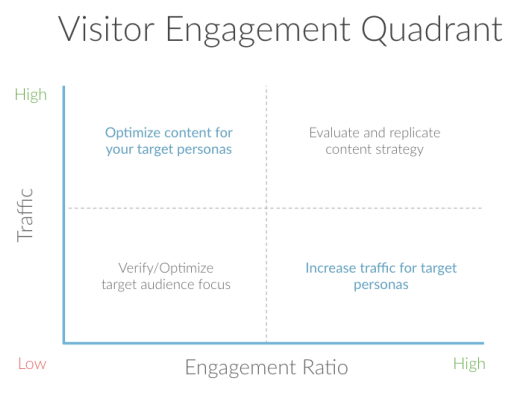
“Beam me up some customers, Scotty!”
That doesn’t mean that this information isn’t helpful. It absolutely is.
But it’s also distracting, and it deserves to be made fun of.
Another recent example of this I saw was in an article on Account-Based Marketing (or ABM), which is the current obsession of almost every marketer.
If you’re unfamiliar, ABM is a cool and effective way to sell to businesses that use hyper-focused, personalized content.
So of course, we should create an impersonal equation to represent this very personal concept:
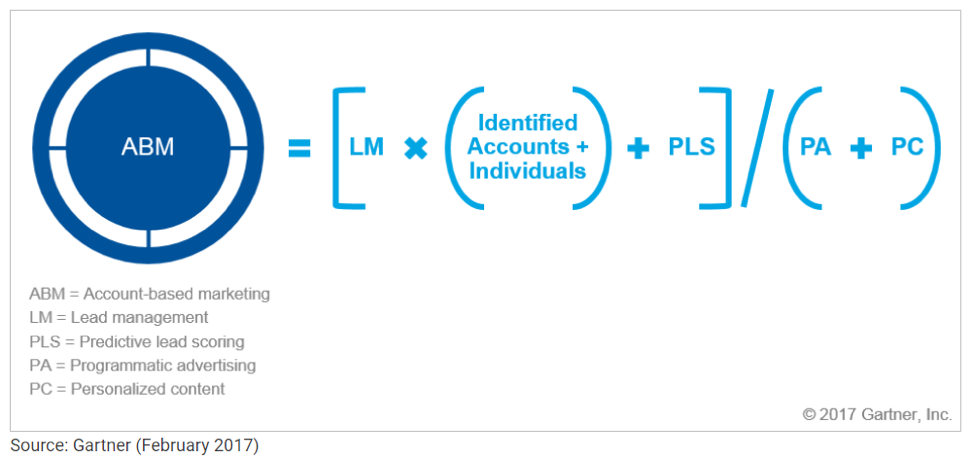
Beep Boop. Must find and eat data.
Again, this is a helpful idea. When I take the time to think about the overly convoluted equation they gave me, it starts to make a little more sense.
But by the time I parse out and determine what all of the little acronyms mean, I could have solved world hunger or done something that’s tangibly productive.
It’s great to engage visually (which we’ll get to more in a bit), but if you make it harder to understand your visuals than your written copy, then you’re doing it wrong. Even if you have complex data, you can make it easier to understand by good data visualization.
The key takeaway I’m trying to point out here is that you have to personalize content for B2B lead generation. Google proved back in 2015 that you’re mostly talking to non-C-suite employees when gunning for a sale.

That means your content marketing efforts need to be both digestible and engaging for people who prefer to work only 40 hours each week.
Tone down the know-it-all, and put some heart and humanity back into your content creation efforts. Take for example the content on classic gaming site Solitaire Bliss. The headline explains exactly what they do, and then they provide additional details.
Businesses are run by humans, and humans buy from businesses. Act accordingly and watch your Marketing ROI soar.
Error #2: Your Content Isn’t Based on SERPs
What’s the point of creating content if no customer is ever going to read it?
There are plenty of blogs out there that are the corporate equivalent of my old MySpace account. I’m pretty sure it exists, but I’m never going to do anything with it.
My point is, if you’re going to create content for the B2B space, whether it comes from businesses providing virtual receptionist or human resources, it needs to have a chance at hitting the top of Google so it can nurture leads.
If you don’t rank in the top five or so, you’re wasting your time. No one is going to click on or read your content. It won’t get social shares on LinkedIn or Twitter.
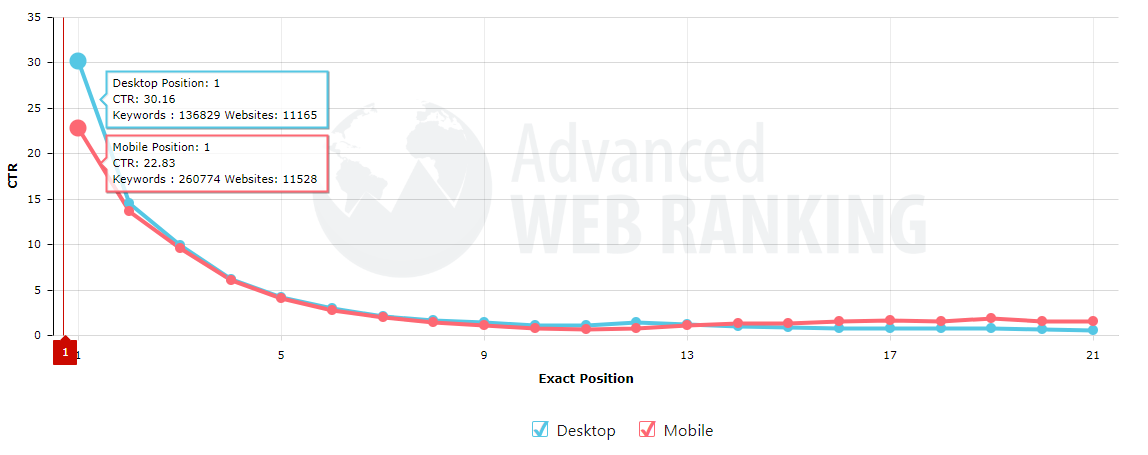
So when it comes time to create your content, one of the best places to start is with the top-ranked content for your industry that already exists.
If you’re going to topple a giant, shouldn’t you know what it looks like first?
Start with analytics. Researching the Search Engine Results Page (SERP) for the topic of your content is the only starting point that makes sense.
To show you what I mean, let’s get a little meta here. How did I apply the current SERPs in this very article?
First, I got a topic and keyword phrase from my lizard overlords. In this case, I was told to write something for “best b2b content marketing.”
That’s very human-friendly, so naturally, I plugged it into Google to see what I could find:
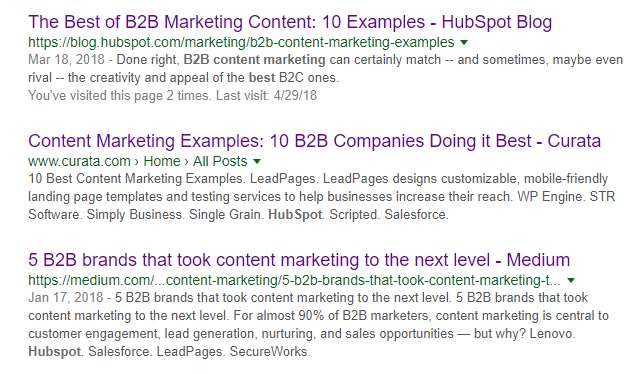
And the results are pretty illuminating. I have to write this article so that it competes with HubSpot, Curata, and Medium.
That’s just peachy.
But when I look a little closer (aka read the articles), one notable element of these articles is that they all provide examples. That means Google is going to be evaluating my post to find B2B marketing examples if I ever want to beat these guys.
So later, we’ll look at some of the best examples of B2B content strategies. Until then, back to the SERP analysis.
The next part that I look at is the “People also ask” section:

This section is helpful because it lets me round out something called user intent. That’s jargon that means “why are people searching for this?”
Based on these results, it looks like there are three primary considerations that I can pull from this:
- People want to know how, or if, B2B content is different.
- Ditto for overall B2B content marketing strategies.
- Once again, I need to provide B2B content marketing examples.
I make a note of these elements, and then look for one last tantalizing piece of information:
Is there a snippet?
In this case, there is:
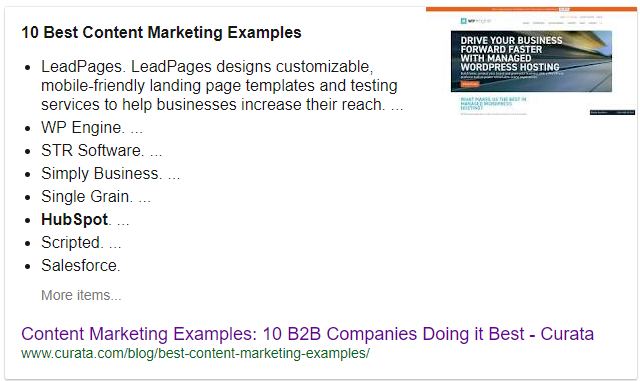
And once again, it brings me back to examples. So if I don’t include some examples of B2B businesses that get this process right, then I’m not going to get to the top of the SERP.
Same goes for you. You can use this analysis to help you see what you’re up against and inform your writing.
All you have to do is take what’s done, put a unique angle on it, and then make it better.
Error #3: Sources? What Sources?
Let me give you a flashback to high school.
You’re gangly, awkward, and have acne all over your face.
On top of that, you hate your English teacher and think it’s dumb she flunked you for plagiarizing that research paper you totally wrote yourself.
And all of that is because you didn’t correctly cite a few dumb sources. How lame is that?
Okay, back to reality now.
I get that you don’t want to link to competitors.
So don’t, if you can help it.
I get that you want to make it seem like you’re an authority.
By all means, use the data that’s out there to help with that.
I get that adding a source is incredibly difficult and requires a master’s degree in common decency.
But all you do by omitting sources is, essentially, indicate that you’re more likely to be a fraud. Unless you’re publishing original research, link to your source.
Just check this lovely example from some research I was doing for one of Codeless’ clients on inventory management:
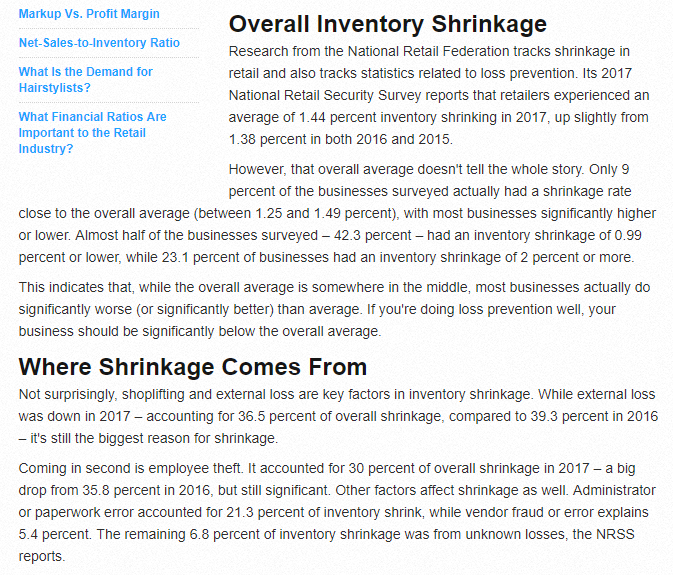
I count about a dozen stats – all from the same source – and none of them are linked back to the original.
Let’s get something straight. I don’t want to read your summary of someone else’s research. Neither do your customers.
I (and your customers) would prefer to read the original source (which is here) than your summary any day. In this case, it even has helpful graphs that make it much, much easier to comprehend this data.
But without you linking to it in your copy, a few things go through the average reader’s mind:
- How do I know you’re not lying?
- Can I find the source on my own?
- Do I want to do business with someone whose content is this lazy?
All of those are bad for your image.
Link to your sources. It’s really not that hard.
Error #4: Ditto for Visuals
One of the most annoying parts of being a writer is knowing that many, many people won’t read my content.
And they won’t read your content either.
Studies have shown that the vast majority of internet users will read less than 100 words on an article on average:
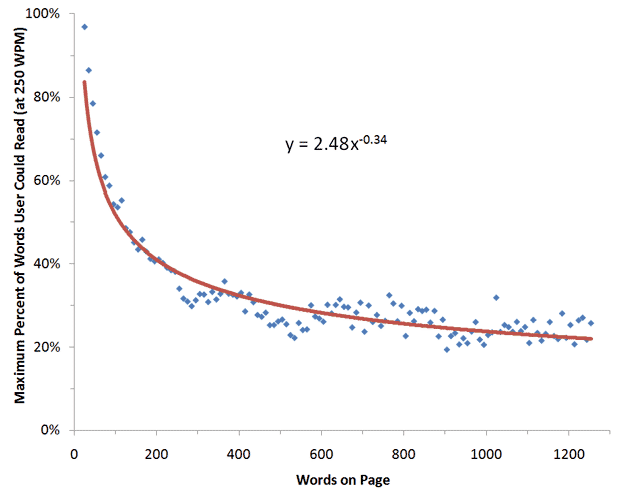
That means we should all just pack it up and go home, right?
Not exactly.
While I certainly wish that more people would read the content that it takes hours to create, I’m not blind to the fact that visuals are more effective.
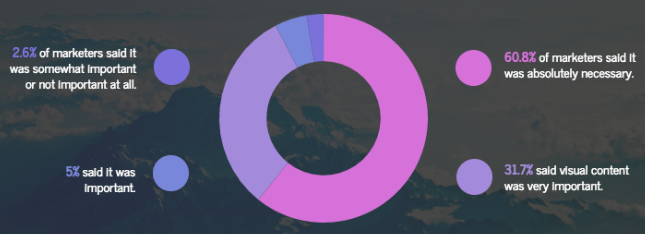
To be a good writer, you have to have a discerning visual eye.
You have to be willing to find visuals that others have created, or you need an excellent team of designers that will help you create interesting visuals.
But so many B2B companies just ignore this fact.
While researching for this very point, I found a rather ironic example that illustrates the very need for me to make this point.
Just check out this wall of text about the power of infographics:
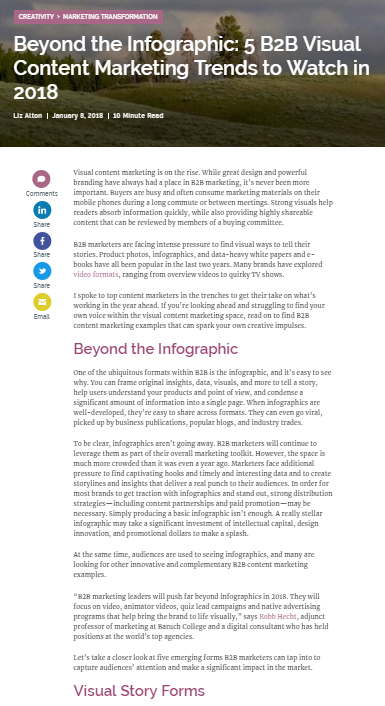
Wouldn’t this be better in, say I don’t know, an infographic?
Or at the very least, wouldn’t it be better to include some visuals that help visualize the immense power of visuals? Using slideshows is another great way to use visual elements to break down information into easy-to-digest sections. For example, with PlayPlay’s custom slideshow maker, you can create stunning presentations that are sure to grab your audience’s attention.
Some people just don’t get it I guess.
Use infographics and visuals if you want to keep people interested past your 100th word. You’ll get better results and likely see more organic traffic if you do.
Error #5: You’re Too Stuck to the Bandwagon
Confession time: I read Twilight in middle school.
It was a mistake, and I only did it because of a girl I liked.
It was the biggest bandwagon-y waste of time and brain power I’ve ever committed, and I hate myself for it to this day.
Now imagine the immense waste of time that is Twilight applied to your business. I don’t care if you’re Team Edward or Team Jacob, because you’re actually just Team Waste-Time-and-Money.
Case in point is this little rant about chat marketing. It’s useful for some, but it’s not for everybody.
Another one that I notice a lot is the absolute obsession marketers have with influencers. I realize that they’re a powerful asset, but a good influencer isn’t a substitute for good content.
Take a step back and make sure that you’re not just doing something because a thought leadership piece on social media told you to.
(Same goes for the points in this post. Do your research.)
Stop the bandwagon. Make your own wagon instead. That’s when great content gets made and shared.
Some Best-in-Class Content Marketing Examples for B2B
I promised in my SERPs analysis that we would get to some good examples of B2B content marketing, so here we are.
In our last few breaths here, I want to briefly highlight some good players in the B2B content realm that you can use for inspiration for your marketing plan.
Let’s get cracking.
John Deere’s The Furrow
The Furrow from John Deere has the unique distinction of being considered the O.G. of B2B content.
It’s been around since 1895, and continually provides engaging stories powered by John Deere’s machinery.

It’s mostly storytelling-based, and provides an excellent look into how engaging and not-boring B2B content can be.
GE’s World in Motion
The World in Motion project from GE is their creative attempt to provide written content in a strikingly visual format.
When you navigate to the World in Motion homepage, you’ll find an interactive globe with clickable points of data:
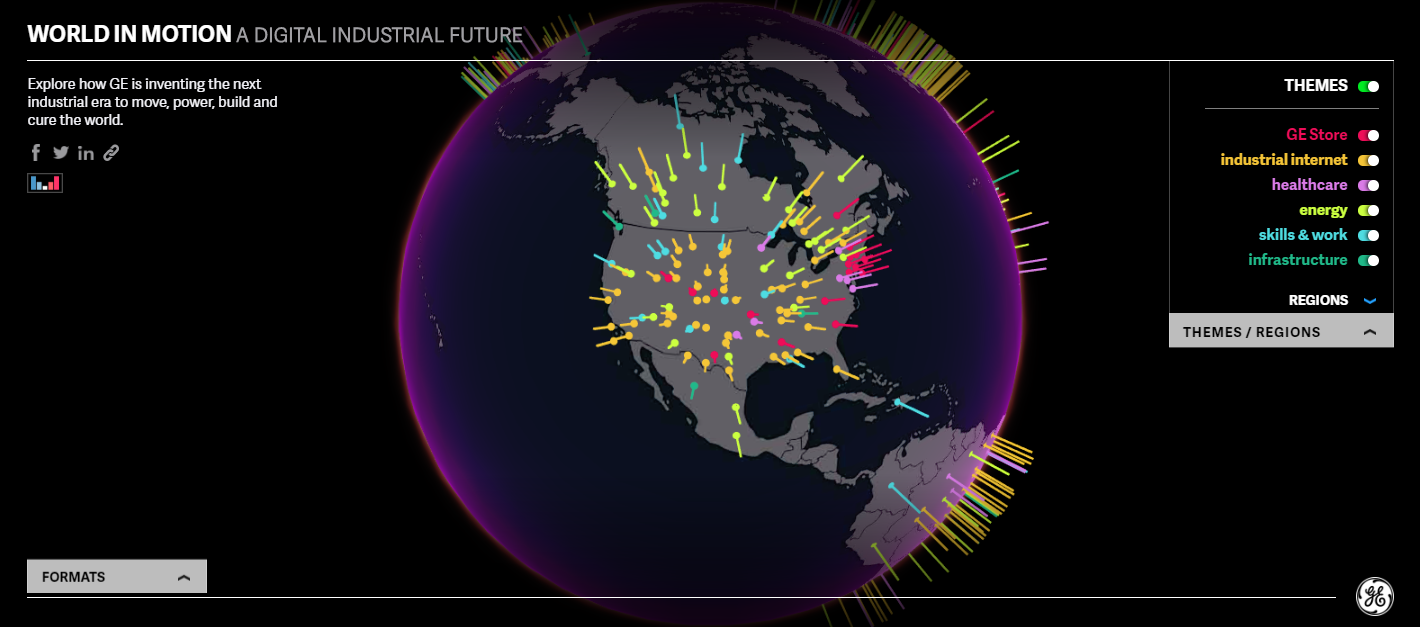
Click on one of those points, and it will send you to a corresponding article that touches on one of GE’s worldwide initiatives. They focus on areas like healthcare, infrastructure, and energy in a way that attracts a broad audience. It’s an innovative way to approach content delivery that helps create an interested audience no matter where they are in the world.
Content Marketing Institute’s Annual Benchmark Report
It’s hard to talk about B2B content examples without bringing up the Content Marketing Institute’s annual benchmark report.
While it’s hard to know for sure, it’s probably one of the most thoroughly researched, widely quoted studies in the content marketing industry.
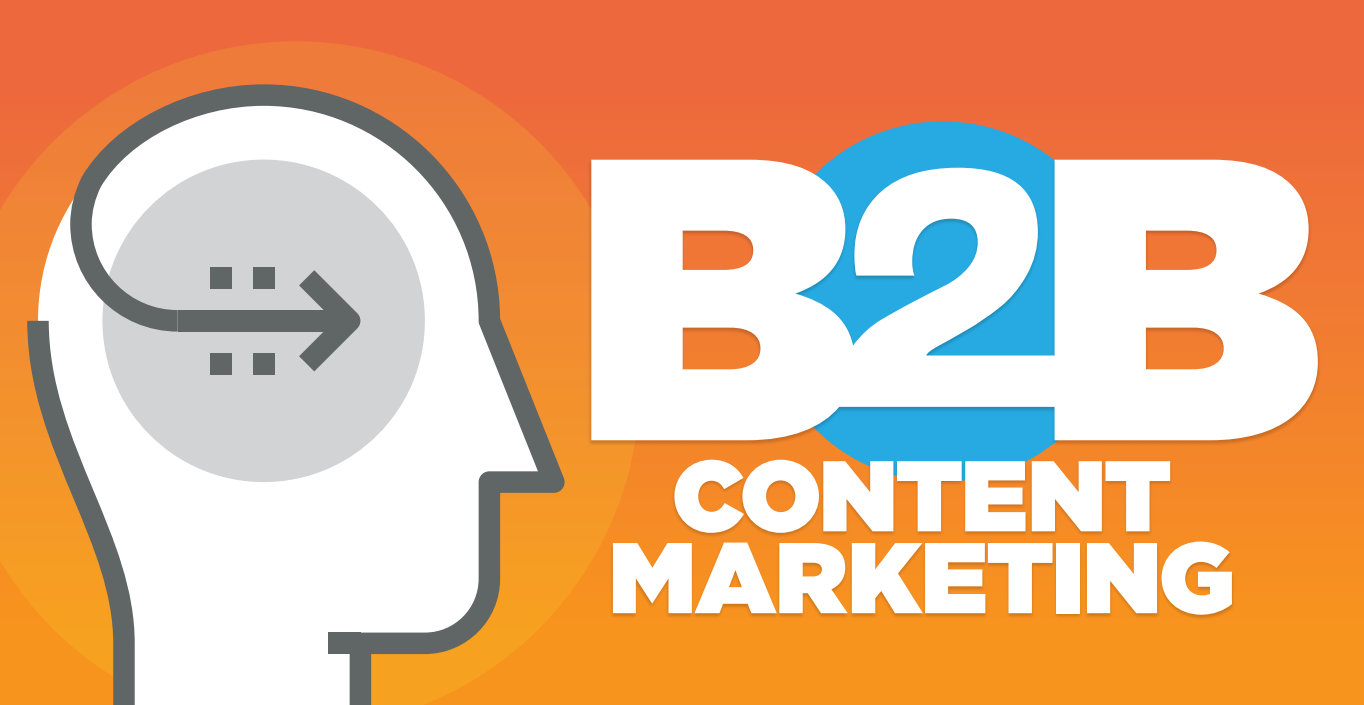
It’s both a reasonable justification for engaging in your unique content and a great example of how you can create a lasting impression with just a little bit of effort.
The Duarte Blog
One of my public speaking professors in college turned me on to the magic of the Duarte Blog, which aims to help professionals improve their public speaking skills.
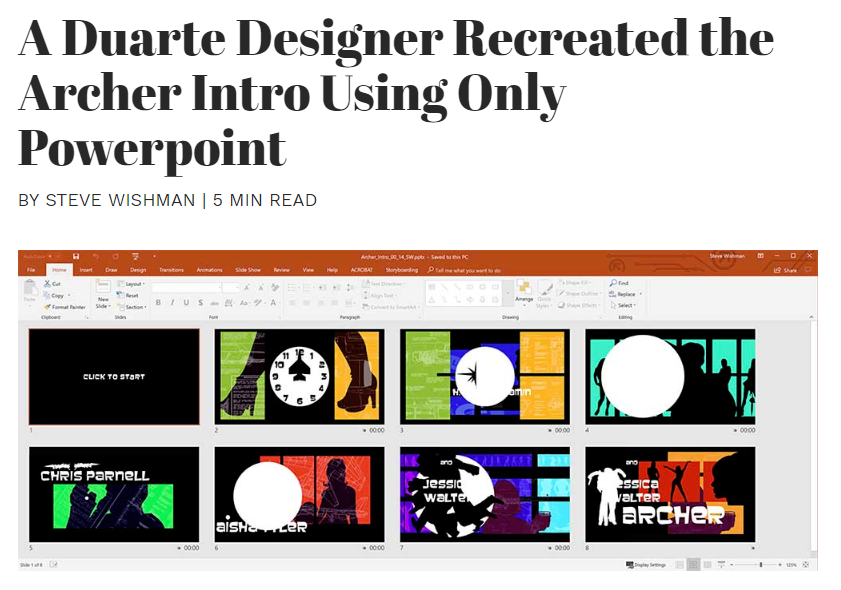
As the founder Nancy Duarte has personally coached some of the top presenters at the famed TED Talks, you know this advice is solid gold. Plus, it practices what it preaches regarding presentations, and delivers against many of the weaknesses I’ve pointed out in this article.
Conclusion
B2B content marketing is really boring, but it doesn’t have to be. If you want to create a content marketing strategy that will boost your conversion rate, you have to find ways to keep the consumers’ interest.
It’s pretty easy to create content that is like everyone else in your industry. It’s pretty lame to create the same types of content as your competitors.
But you can expect your conversion rate to tank if you do.
Begin by researching existing content and SERPs before you sit down to type everything out. If you don’t know your competitors, you can’t beat them.
Link to credible sources, or create your own research that will get you links.
Use good visuals, or take an extra day and have some designers create some for you.
And stop hitching your brand to the B2B content bandwagon. Don’t make being like everyone else part of your content marketing goals. SERPs are already competitive, and imitating everyone else will get you nowhere.
Instead, look to successful brands as a source of inspiration. Use what others are doing and strive to take it a step further.
Your content, and your brand, will better for it.


